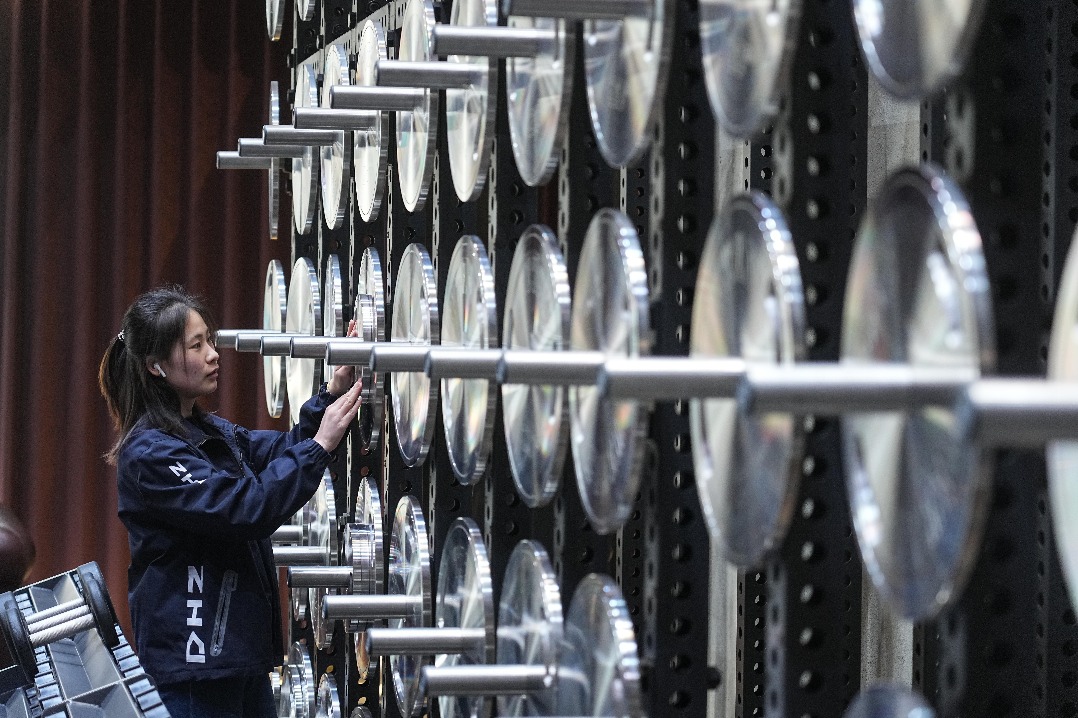Proactive policy, forecasts help stabilize growth

Despite a complex and volatile international landscape and disruptions to the global economic and trade order this year, China's economy has maintained steady momentum thanks to proactive forecasts and contingency plans to counter a new wave of external pressure.
In the first half, the country's GDP grew 5.3 percent year-on-year, up 0.3 percentage point from the same period last year.
Notably, in the second quarter, against the backdrop of aggressive tariff hikes by the United States, China's GDP expanded by 5.2 percent — marking the third consecutive quarter of growth above 5 percent — exceeding market expectations and laying a solid foundation for achieving the annual growth target of around 5 percent.
In the first half, the nation's economy continued to exhibit a structural trend in which production outpaced demand. Industrial value-added output rose 6.4 percent year-on-year, 0.4 and 0.6 percentage points higher than the same period last year and full-year 2024, respectively.
Foreign trade also outperformed expectations. Despite tariff-related headwinds, China's goods exports in US dollar terms grew 5.9 percent year-on-year in the first half, up 2.2 and 0.1 percentage points compared with the same period last year and the full year, respectively.
This export resilience was largely driven by enhanced diversification of trading partners, with robust growth in exports to non-US markets — shipments to ASEAN and the European Union grew by 13.0 percent and 6.6 percent, respectively.
Meanwhile, domestic consumption continued to recover. This year, the government focused on leveraging ultra-long-term special treasury bonds to support large-scale trade-in programs for consumer goods. The policy has already shown notable effects, while service consumption also gained further traction.
Despite solid economic performance in the first half, the economy still faces considerable uncertainty.
Nominal GDP growth remained below real GDP, with the second quarter nominal growth rate slowing to 3.9 percent year-on-year, reflecting lingering deflationary pressure. In June, the consumer price index ended four straight months of decline, edged up 0.1 percent year-on-year, remaining below 1 percent for 28 consecutive months. These figures point to persistent supply-demand imbalances and the need to closely monitor risks of further demand contraction in the second half.
Since the beginning of the year, the Trump administration's erratic tariff policy has added volatility to the global trade landscape.
According to a July report from the United Nations Conference on Trade and Development, global trade is likely to have increased by $300 billion in the first half, with second quarter growth accelerating to 2.0 percent from 1.5 percent.
However, the report warned that escalating geopolitical tensions and US trade policy uncertainty could significantly constrain global trade in the second half.
As for China-US economic ties, bilateral tensions have eased since the joint statement issued after the Geneva talks on May 12. Still, there remains a risk of renewed trade frictions.
As the short-term benefits of "front-loaded" exports and re-exports wane, China's foreign trade may come under further pressure in the second half.
Domestic consumption also faces downside risks. In the first half, the contribution of final consumption and capital formation to GDP growth declined by 0.3 and 0.4 percentage points, respectively.
In June, retail sales growth slowed to 4.8 percent from 6.4 percent in May, with a 0.16 percent seasonally adjusted month-on-month drop.
The 2025 Government Work Report included 300 billion yuan ($41.8 billion) in ultra-long-term special bonds to support trade-in programs — double the previous year's allocation. However, over half of the funds have already been used, suggesting a waning impact on consumption in the coming months.
Investment, too, showed signs of weakening. In the first half, fixed-asset investment growth slowed to 2.8 percent year-on-year, down 1.1 and 0.4 percentage points compared with the same period last year and full-year 2024.
Among the three major sectors, real estate investment continued to decline, falling 11.2 percent year-on-year in the first half, with the drop expanding by 1.1 and 0.6 percentage points from the same period last year and the full-year level.
The persistent pressure on construction and installation activities, combined with weak income and housing price expectations and high inventory levels, suggest that a sustained rebound in property investment will require continued policy support.
As 2025 marks the final year of the 14th Five-Year Plan (2021-25), balancing a smooth conclusion of the current plan and a strong start to the 15th Five-Year Plan (2026-30) will be a key policy focus.
Given the strong performance in the first half, achieving the full-year growth target of around 5 percent should be attainable, reducing the urgency for additional macro stimulus. Instead, efforts should be focused on deepening reforms during this critical window of recovery.
Following major policy meetings at the end of 2024, this year's Government Work Report identified guarding against external shocks as the overall requirement and laid out concrete steps to implement proactive macro policies.
The broad deficit ratio was set at 8.4 percent, 1.7 percentage points higher than last year. For now, fiscal policy will focus on optimizing the structure of existing spending, accelerating disbursements, and strengthening investments that improve public well-being.
On the monetary side, China has maintained a moderately accommodative stance. On May 7, a new policy package — including reserve requirement ratio cuts, rate reductions, and structural tools — was introduced.
The People's Bank of China, the country's central bank, noted that these measures had been fully implemented within a month and were having a cumulative, positive impact on market confidence and expectations. In the second half, the priority will be to improve monetary policy transmission, deepen financial reforms and consolidate gains from earlier measures.
Expanding domestic demand will be a key focus of reforms. While policies for large-scale equipment renewals and trade-in deals for consumer goods have shown positive effects, they remain mostly one-off.
To sustainably boost demand, reforms must help raise household incomes, improve long-term income expectations and enhance purchasing power. The special action plan to boost consumption released earlier this year outlined measures to increase wages, expand asset-based income and enhance rural incomes, while reducing household burdens via improved childcare, education, healthcare and elderly care systems.
The plan further called for establishing a new real estate development model — particularly in financing — to support a virtuous cycle between finance and property markets.
In tandem, the government is stepping up efforts to curb excessive competition and standardize local business practices.
In early 2025, the National Development and Reform Commission issued guidelines barring local governments from offering preferential policies that violate national rules. A meeting of the Central Financial and Economic Affairs Commission recently reaffirmed the push for a unified national market.
Given the rapidly evolving external environment, China's economy still faces multiple uncertainties in the second half. To solidify the ongoing recovery and use the certainty of high-quality development to offset external volatility, policymakers must strengthen bottom-line thinking, maintain readiness and expand the policy toolkit.
Continued dynamic assessment of internal and external conditions, along with well-prepared contingency plans and reserve policies, will be essential for navigating the road ahead.
The writer is global chief economist at investment bank BOCI China.
The views do not necessarily reflect those of China Daily.




































